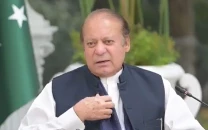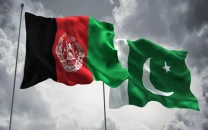Pakistan, India on familiar path
The most significant move, however, was holding the 1960 World Bank-brokered water accord in abeyance.

Pakistan and India are in a familiar territory - staring at yet another military conflict. The latest crisis was triggered by the April 22 Pahalgam attack in which 26 Indian tourists were killed. As in the past, even while the attack was underway, Indian media went into overdrive and started blaming Pakistan.
The incident coincided with the visit to India of US Vice President JD Vance while Prime Minister Narendra Modi was in Saudi Arabia. Modi had to cut short his visit and returned to chair the meeting of Cabinet Committee on Security. After the meeting, India formally charged Pakistan.
The Indian Foreign Secretary announced a raft of measures, including suspension of Indus Water Treaty, expulsion of Pakistani military advisers, closure of the only land border at Wagah and further downgrading of diplomatic ties. Other measures were something that both countries had often resorted to during the times of crisis.
The most significant move, however, was holding the 1960 World Bank-brokered water accord in abeyance. There was, nevertheless, no provision in the treaty either to suspend or abrogate the accord by either side. India had already been seeking modification of the treaty taking into account several changes the region underwent since 1960. Therefore, it seems India used the Pahalgam attack to execute its longstanding desire to scrap the treaty. The suspension of the Indus Accord may just be a step towards eventual abrogation.
Pakistan summoned its National Security Committee, the highest forum of civil and military leadership, to discuss the country's response. As expected, Pakistan retaliated with a slew of measures. It closed the Wagah border not just for bilateral trade (which in any case has been on a halt since 2019, barring only a few items) but also for Afghan transit trade. Pakistan had allowed Afghanistan to use its land route to send goods to India. But that is also now gone.
The real worry is that these diplomatic measures by India may just be the start of a larger conflict between the two nuclear-armed neighbours. Indian Prime Minister Modi, at a public rally in Bihar, said India would pursue attackers and their backers "to the ends of the earth". He, however, did not name Pakistan. Modi was visibly upset because the Pahalgam attack shattered his government's narrative of normalcy returning to the disputed region. Majority of Indian media was beating war drums, with only a handful asking some of the tough and legitimate questions.
While blaming Pakistan is a familiar pattern, the Indian government cannot absolve itself of its own failure. The disputed Kashmir region is the most militarised zone. Over 150,000 troops are deployed along the LoC, with the entire de facto border fenced. The attack took place not close to the LoC but deep inside the disputed territory. Saner voices concede that it was a major security failure. In fact, some Indian analysts, even before the Pahalgam incident, were warning the Modi government that the talk of normalcy was a myth. And they were right. Now the question is: what next?
There were already signs of a new phase of crackdown coming up in Kashmir. Indian authorities have started demolishing houses of locals as part of their campaign to give Kashmiris collective punishment. On the other hand the incident has once again pushed Pakistan and India to the verge of a major conflict. Pakistan has offered an olive branch to India, with PM Shehbaz Sharif expressing readiness to participate in any "neutral, transparent and credible" investigation into the Pahalgam incident. India is unlikely to accept the offer as it has always opposed a third-party involvement. The Modi government seems mulling some form of action inside Pakistan.
After the 2019 Balakot incident, Pakistan showed that any cross-border activity would be met with equal response. War hysteria notwithstanding, it seems India only wants a limited conflict. But the fear is that any miscalculation can trigger a much larger conflict. For now, the subcontinent is on tenterhooks!














1726134115-0/BeFunk_-(41)1726134115-0-208x130.webp)

COMMENTS
Comments are moderated and generally will be posted if they are on-topic and not abusive.
For more information, please see our Comments FAQ